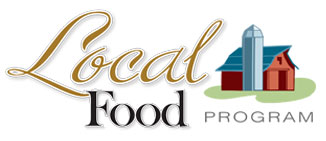


Beefsteak: Large, meaty interior that is good for slicing, sandwiches, and salads.
Cherry: Small; good for snacking.
Plum and Roma: Small and round to elongated; often less juicy, so good for sauces or drying.
Salad: Medium size; good for slicing and salads.
Popular Heirloom or Specialty Varieties: Brandywine, Cherokee Purple, German Queen, Green Zebra, San Marzano, Striped German, and many others. Heirloom and specialty tomatoes come in diverse colors, shapes, sizes, and flavors.
Tomatoes should be firm with shiny skin. Avoid tomatoes with breaks in the skin or bruises.
Here are a few tips about preparing tomatoes and tomatillos.
Wash tomatoes under cool running water before use.
Fresh: Chop or cut tomatoes to use on salads or sandwiches or as a topping to your favorite dishes.
Roast: Heat oven to 350°F. Coat a baking sheet with cooking spray. Core tomatoes and cut in half. Add a pinch of salt to each half and place them cut side down on paper towels for 20 minutes. Place tomatoes on a baking sheet, drizzle with oil to taste, and bake for 1 hour and 15 minutes or until tomatoes have softened.
Grill: Heat a greased grill pan on medium-high heat. Cut tomatoes in half and lay face down on a paper towel and let sit for 30 minutes. Place halves face down in a pan and grill for 5 minutes. Turn and grill for 1 minute or until skin is charred. Remove tomatoes from heat and let cool.
Braise: Place a skillet on medium-high heat. Chop, seed, and peel tomatoes and add them to the warm skillet. Reduce heat and cook until tender.
For the best flavor, eat tomatoes soon after harvest. Store them at room temperature and out of direct sunlight. They are best used after 1 week of ripeness.
Tomatoes have a variety of long-term storage options. They can be canned, dried, or frozen and are very versitile in American cooking.
Learn how to freeze and can tomatoes.
Learn more about freezing vegetables.
Learn more about drying vegetables. Dried tomatoes make an excellent pungent, sweet ingredient for pestos, sauces, and salads.
Find general canning recipes, recipes for canned salsas, and recipes for canned soups.
Wild tomatoes are found in the Andes Mountains in South America.
|
Serving Size |
1 Cup Chopped or Sliced |
|
|
|
|
|
|
Nutrients |
Amount |
% Daily Value |
|
Total Calories |
32 |
|
|
Protein |
2g |
|
|
Carbohydrates |
7g |
2 |
|
Dietary Fiber |
2g |
9 |
|
Total Sugars |
5g |
|
|
Total Fat |
0g |
1 |
|
Saturated Fat |
0g |
0 |
|
Cholesterol |
0mg |
0 |
|
|
|
|
|
Minerals |
|
|
|
Calcium |
18 mg |
|
|
Sodium |
9mg |
|
|
Iron |
|
|
|
|
|
|
|
Vitamins |
|
|
|
Vitamin A |
63 ug |
|
|
Vitamin C |
25 mg |
|
|
|
|
|
|
|
|
|
Always keep fresh produce away from raw meat and raw meat juices to prevent cross-contamination.
Follow the safe food guidelines for all fresh produce.
Tomatoes are a tender (warm-season) perennial grown as an annual. The fruit is harvested.
There are many different types of tomatoes and many different ways to grow them. Plant height depends on cultivar, but some tomatoes can grow as tall as 6 feet, especially if staked.
Plant transplants 2 weeks after average last frost date. Planting can continue until midsummer. Last planting date is about 100 days before average first frost date.
Spacing depends on variety. Space dwarf plants 12 inches apart; staked plants 15-24 inches apart; caged
plants and plants allowed to sprawl on the ground 24-36 inches apart.
Harvest tomatoes when fully colored. Time from planting to first harvest varies by cultivar,
usually 60-90 days.
Scan the QR code below to view this page on your mobile device.